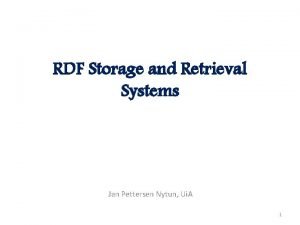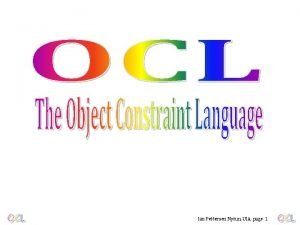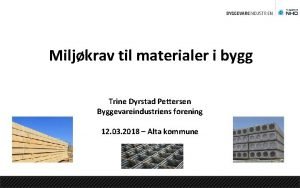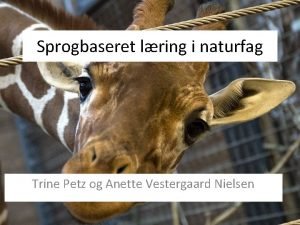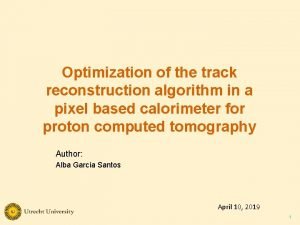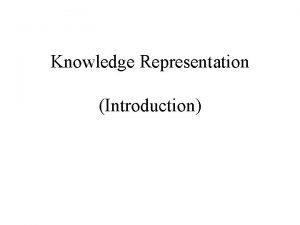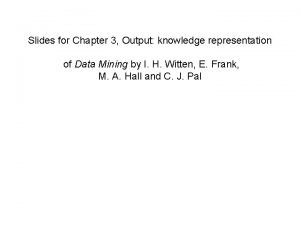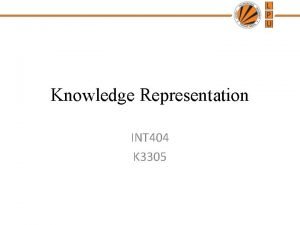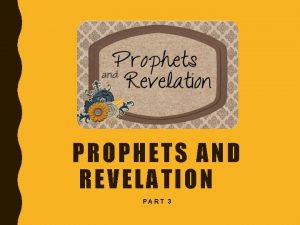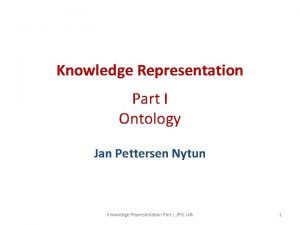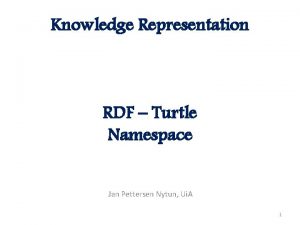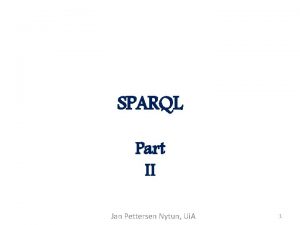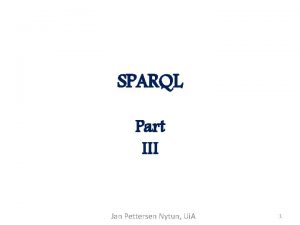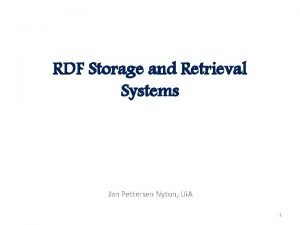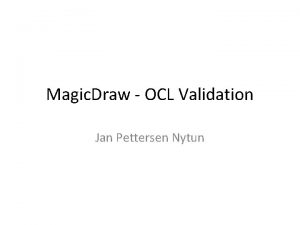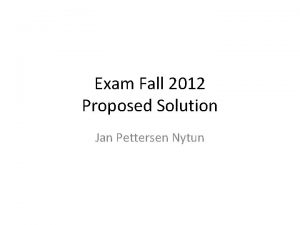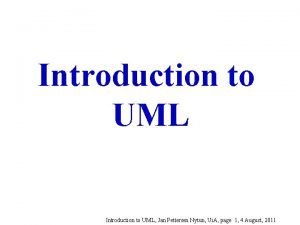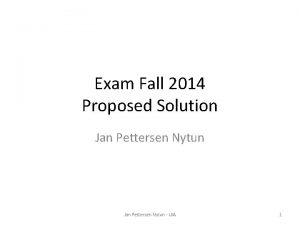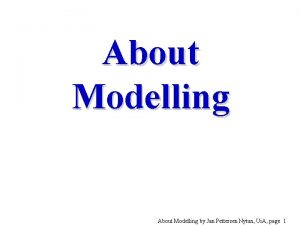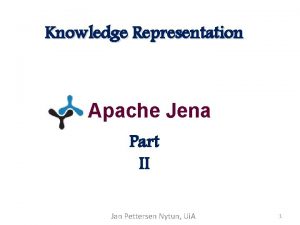Knowledge Representation Part II Jan Pettersen Nytun Knowledge


















![S P O References [1] Book: David Poole and Alan Mackworth, Artificial Intelligence: Foundations S P O References [1] Book: David Poole and Alan Mackworth, Artificial Intelligence: Foundations](https://slidetodoc.com/presentation_image_h2/9c0fe9677f16cee712f6918686d30dab/image-19.jpg)
- Slides: 19

Knowledge Representation Part II Jan Pettersen Nytun Knowledge Representation Part II, JPN, Ui. A 1

S P O Description Logic (DL) • DL is used in AI - modern ontology languages are based on description logics, e. g. , OWL. • Provide a logical formalism for ontologies and the Semantic Web. • Much used in biomedical informatics codification of medical knowledge. Knowledge Representation Part II, JPN, Ui. A 2

The Ontology Web Language (OWL) A W 3 C recommendation. The Semantic Web "The Semantic Web is not a separate Web but an extension of the current one, in which information is given well-defined meaning, better enabling computers and people to work in cooperation. “ Ref: "The Semantic Web" by Tim Berners-Lee, James Hendler, and Ora Lassila, Scientific American, 2001 3

S P O Description Logic Continues… • A description logic is used to describe classes, properties, and individuals. • The knowledge base contains: – A terminological part which should remain constant as the domain being modelled changes. – An assertional part describing what is true in some domain at some point in time. Knowledge Representation Part II, JPN, Ui. A 4

S P O Description Logic Continues… Terminology part: – Also called TBox (typical AI) or simply model. – Defines concepts (also called classes), e. g. , vital sign, blood pressure, patient. – Defines properties (also called roles or property types) e. g. , has blood pressure Knowledge Representation Part II, JPN, Ui. A 5

S P O Description Logic Continues… Assertion part: – Also called ABox or model Instance – Descriptions of individuals (also called objects), e. g. , description of individual patients. – Describes properties of individuals, e. g. , the blood pressure of some specific patient. – Not all individuals in the assertion part may have been classified and this differs from ordinary object-oriented program development. Knowledge Representation Part II, JPN, Ui. A 6

Knowledge Base Sensors Terminology (TBox) - Model Atomic Complex Sensor Handlers Classes (Concepts) Actuator Handlers Property Types Actuators Assertions (ABox) - Model Instance Asserted Inferred Named Individuals Properties Rules User Interface Application Software Query Engine Reasoner

Protégé A free, open-source OWL ontology editor and framework for building intelligent systems Class hierarchy: Patient is subclass Person which is subclass of Thing. Property hierarchy: Properties are model separately from Classes. has. SSN is sub property of top. Data. Property. 8

Protégé Property has. SSN has Person as domain. This means that an individual having this property must be of type Person, i. e. , its an axiom stating that given an individual with this property then it can be inferred that this individual is of type Person. Property has. SSN has string as Range. I. e. , the value of the property must be a text string, e. g. , “ 17106575561”. 9

Defining an Individual S P O Individual has property has. SSN with value “ 17106575561”. Id is jan. PN (or correctly: http: //www. semanticweb. org/janpn/ontologies/2014/7/untitled-ontology-2#jan. PN which we can assume is a globally unique id). The type of the individual is “generic” (i. e. , type is Thing). 10

S P O Starting the Reasoner Since jan. PN has property has. SSN then it must be a Person (i. e. , the domain is Person for has. SSN). inferred Knowledge Representation Part I, JPN, Ui. A 11

S P O Type and Subclass as Properties • Type of individual is stated as a property. The property (i. e. , the property type) is predefined and called rdf: type. • Subclass is a property between classes. The property (i. e. , the property type) is predefined and called rdfs: sub. Class. Of. Knowledge Representation Part I, JPN, Ui. A 12

Knowledge Base Terminology (TBox) - Model Atomic Complex Classes (Concepts) Property Types Assertions (ABox) - Model Instance Asserted Inferred Named Individuals Properties Rules

S P O Complex Class • An atomic class is somewhat like an ordinary class. • A Complex class is built with the help of description logic constructors, properties and other classes (atomic or complex). • Example using intersection. Of: Informally: A man is a human that is also a male Formally: Class Man is the intersection of class Human and Male (DL: Equivalent. Class(Man intersection. Of(Human Male)) 14

Example in Protégé (Alternatively you may specify that Man is subclass of Human and Man) Run reasoner Reasoner infer that Tom is a Man Knowledge Representation, JPN, Ui. A 15

Example: To be a parent you need to be human and additionally parent to at least one child. Run reasoner Reasoner infers that Tom is a Human. Parent 16

To be a sick human you need to suffer from at least one sickness Tom and Toms. Diabetes 2 are individuals Run reasoner Reasoner infers that Tom is a Sick. Human 17

Example of rule using The Semantic Web Rule Language (SWRL): has. Parent(? x 1, ? x 2) ∧ has. Brother(? x 2, ? x 3) ⇒ has. Uncle(? x 1, ? x 3) Knowledge Representation, JPN, Ui. A 18
![S P O References 1 Book David Poole and Alan Mackworth Artificial Intelligence Foundations S P O References [1] Book: David Poole and Alan Mackworth, Artificial Intelligence: Foundations](https://slidetodoc.com/presentation_image_h2/9c0fe9677f16cee712f6918686d30dab/image-19.jpg)
S P O References [1] Book: David Poole and Alan Mackworth, Artificial Intelligence: Foundations of Computational Agents, Cambridge University Press, 2010, http: //artint. info/ [2] http: //dsg. harvard. edu/courses/hst 952/lecture 12. ppt%E 2%80%8 E [3] http: //www. jfsowa. com/logic/math. htm#Propositional [4] http: //www. cs. ubc. ca/~kevinlb/teaching/cs 322%20 -%202009 -10/Lectures/Logic 2. pdf [5] http: //www. cs. ubc. ca/~kevinlb/teaching/cs 322%20 -%202009 -10/Lectures/Logic 1. pdf [6] http: //artint. info/slides/ch 05/lect 2. pdf Sowa, John F. (2000) Knowledge Representation: Logical, Philosophical, and Computational Foundations, Brooks/Cole Publishing Co. , Pacific Grove, CA. Artificial Intelligence: Structures and Strategies for Complex Problem Solving (Addison-Wesley), George F. Luger Smith Barry. Accessed 24 th of March, 2013, Ontology: Philosophical and Computational. http: //ontology. buffalo. edu/smith/articles/ontologies. htm Quine WVO. On What There Is. Review of Metaphysics 1948; p. 21– 38. Jan Pettersen Nytun, Ui. A, page 19
 Jan pettersen
Jan pettersen Jan pettersen
Jan pettersen Helge pettersen
Helge pettersen Trine dyrstad pettersen
Trine dyrstad pettersen Petz erika
Petz erika Helge egil seime pettersen
Helge egil seime pettersen Script knowledge representation
Script knowledge representation Output knowledge
Output knowledge Which is not a property of representation of knowledge?
Which is not a property of representation of knowledge? Part part whole addition
Part part whole addition Part to part ratio definition
Part to part ratio definition Brainpop ratios
Brainpop ratios Technical description meaning
Technical description meaning Under bar function
Under bar function The part of a shadow surrounding the darkest part
The part of a shadow surrounding the darkest part Two way anova minitab 17
Two way anova minitab 17 Three principles of acquiring spiritual knowledge
Three principles of acquiring spiritual knowledge Three principles of acquiring spiritual knowledge
Three principles of acquiring spiritual knowledge Personal vs shared knowledge
Personal vs shared knowledge Knowledge shared is knowledge squared
Knowledge shared is knowledge squared
